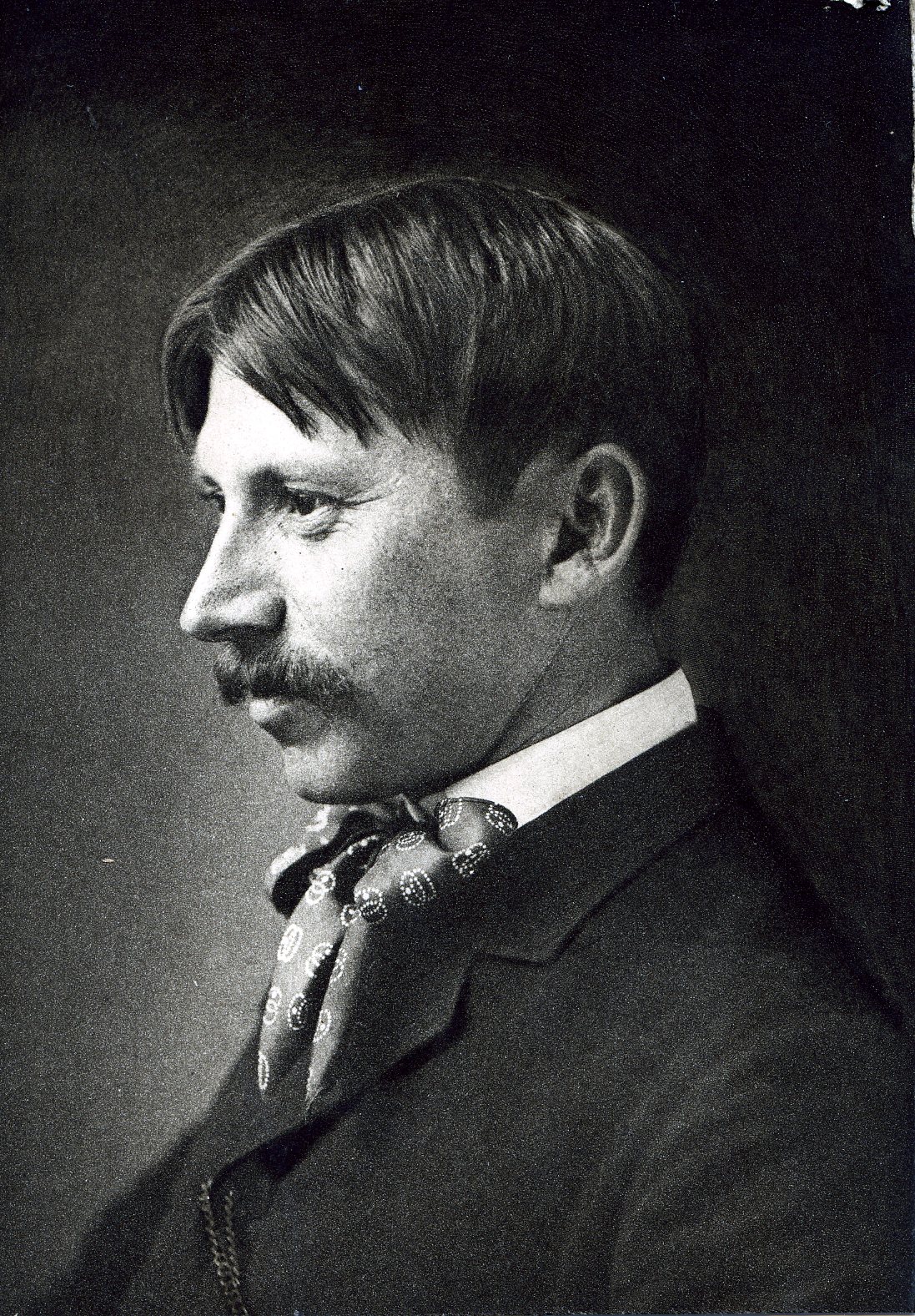Member Directory,
1847 - 1922
Carlton T. Chapman
Artist
Centurion, 1896–1925
George Willoughby Maynard and Charles Y. Turner
New London, Ohio
New York (Manhattan), New York
Age thirty-six
New London, Ohio

Century Memorial
Zogbaum’s cavalry was the latest product of West Point and Saint Cyr, his battleships the last word in naval construction. But the war-ships of Carlton Theodore Chapman were the ships of Nelson, Lawrence and Porter. Where Zogbaum [subject of the preceding memorial sketch] drew the white iron-clad cruisers of Santiago or the long gray floating fortresses of the European war, Chapman’s imagination played about the wooden frigates of a century ago, bringing them to life with vividness that a Mahan or a Marryatt might have envied. A naval engagement on his canvas, with sails and rigging torn by cannon-shot, the sailors crowding to the bulwark to board the enemy, the sea itself foaming with the plunge of projectiles or, as in that dramatic painting of “The Constitution and the Java,” the battered and mastless hulk of the defeated frigate still afloat while the smoke from her burning decks pours through the hatches—to see these extraordinary productions is to visualize the Battle of Cape St. Vincent and the naval War of 1812.
Chapman, like Zogbaum, had no maritime ancestry; he was born in Ohio. But his imagination tasted salt water when he was paddling as a boy about the Maumee River; it was a sure instinct that drew him when he went to Cuba for Harper’s Weekly to sketch the naval encounters of the Spanish-American War. Not, however, until his illustrations of Barnes’s War of 1812 and of Captain Mahan’s Naval Wars of the United States did his genius really find itself, leading the way to that extraordinary series of maritime battle-pieces of another era with which his name will always be associated. Those paintings impress the spectator, first by their wholly convincing sense of motion on the part of ship and crew; then by the atmosphere which brings sky and ocean into harmony with the mood of battle or defeat; then, on a longer view, by the amazing accuracy of every touch by which the mechanism of a naval fight of a century ago is pictured.
Chapman was in fact as deeply learned in the technical realities of old-time ocean warfare as Zogbaum was in the technicalities of modern war; it was only when the absolute accuracy of every detail had been fixed for these war-ships of a century ago that his imagination had full play. The friend who heard him exclaim, as he gave the finishing touches to his convincing picture of the three-master running before the squall—“If I could only paint the things I hear, the wind in the rigging, the roar of the sea, the thunder underneath her bows!”—had caught him in the creative moment. Those who have seen his paintings know that he did put exactly these things on canvas.
Alexander Dana Noyes
1926 Century Association Yearbook
Related Members
Member Directory Home-
 Samuel Wakeman AndrewsArchitectCenturion, 1918–1921
Samuel Wakeman AndrewsArchitectCenturion, 1918–1921 -
 William A. BatesArchitectCenturion, 1913–1922
William A. BatesArchitectCenturion, 1913–1922 -
 Alfred Thayer MahanU.S. NavyCenturion, 1896–1909
Alfred Thayer MahanU.S. NavyCenturion, 1896–1909 -
 George Willoughby MaynardArtistCenturion, 1886–1923
George Willoughby MaynardArtistCenturion, 1886–1923 -
 Charles F. W. MielatzArtistCenturion, 1911–1919
Charles F. W. MielatzArtistCenturion, 1911–1919 -
 Joseph PennellArtistCenturion, 1905–1926
Joseph PennellArtistCenturion, 1905–1926 -
 Charles Y. TurnerArtistCenturion, 1887–1918
Charles Y. TurnerArtistCenturion, 1887–1918 -
 Rufus F. ZogbaumArtistCenturion, 1893–1925
Rufus F. ZogbaumArtistCenturion, 1893–1925







